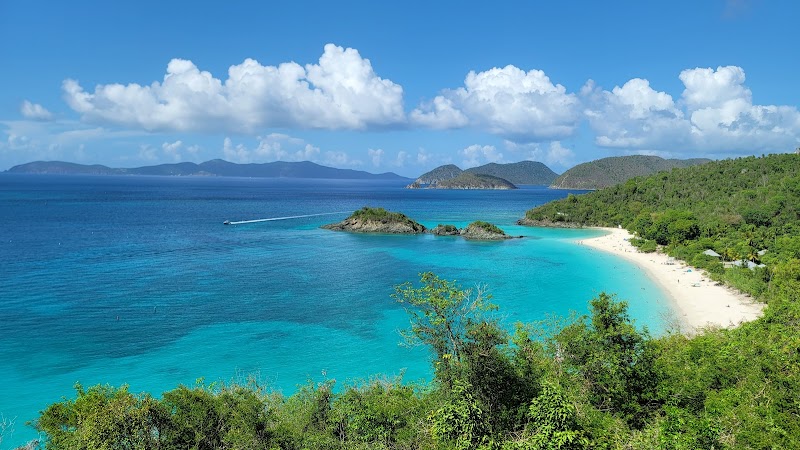Mastering Timing for Snorkeling and Swimming Near La Parguera’s Cays
La Parguera’s cays offer unparalleled snorkeling and swimming opportunities, crystal-clear waters, and vibrant marine life. Mastering the right timing unlocks calmer seas, better visibility, and a safer adventure beneath the waves.
Plan Around Tides
Use local tide charts to pick mid or low tide for optimal snorkeling depth and access to reef features without risking shallow damage.
Wear Reef-Safe Sunscreen
Protect yourself and La Parguera’s fragile marine ecosystem by using eco-friendly, reef-safe sunscreen.
Bring Fins for Easier Swimming
Fins increase your propulsion, letting you glide with the current instead of fighting against it, conserving energy for exploration.
Start Early in the Day
Morning hours provide calmer waters, better visibility, and less boat traffic, enhancing both safety and the underwater experience.
Mastering Timing for Snorkeling and Swimming Near La Parguera’s Cays

Kayak Rental
All Ages • 9:00 AM to 4:00 pm • Explore or kick back and relax • NO TIME LIMIT
Discover the beauty of Puerto Rico's coast with a private kayak rental in Lajas. Glide through tranquil waters, explore hidden spots, and enjoy a personalized adventure on this scenic boat tour.
La Parguera’s cays, a cluster of coral islets off Puerto Rico’s southwestern coast, offer some of the clearest waters and richest marine life in the Caribbean. But to truly experience their underwater wonders, timing is crucial. The ebb and flow of tides, daily sun patterns, and seasonal shifts all shape when and how best to snorkel or swim here.
Start early in the morning — between 7 a.m. and 10 a.m. — when the water is calm and visibility peaks. The gentle light filters through surface waves, spotlighting coral formations as fish cautiously emerge, daring you to explore deeper passages. Currents tend to slacken during this window, reducing fatigue and ensuring steady movement through the reefs.
Low tide hours are your best bets for snorkeling close to the cays’ edges, where exposed coral heads and shallow pools become accessible. However, be mindful—certain reefs can become dangerously shallow, so always check tide charts in advance. Mid-tide is often optimal for swimming, when water depth strikes a balance between easy entry and the full aquatic display.
The seasons shape the marine personality here. Between December and April, the seas grow quieter, and water clarity improves, creating near-perfect conditions. Summer months bring warmer waters but also increased wave action and sporadic afternoon showers, which can stir up sediment and reduce visibility.
Practical preparation enhances your experience: wear reef-safe sunscreen to protect the ecosystem, bring fins for easier propulsion, and pack a waterproof bag with essentials such as water and snacks. The cays themselves vary in terrain—some provide sandy beaches ideal for quick dips, while others have jagged rocks where careful footing and quick entry-exit are crucial.
Beyond technique, respect the water’s rhythms. The currents push forward with intention, sharp and selective, rewarding patience and attentive navigation. Listen to the natural cues—the light's angle, the subtle swell changes, the fish activity—to guide your timing. La Parguera’s cays are firmly themselves, a dynamic stage set by the sea, inviting swimmers and snorkelers to engage not as conquerors, but as appreciative visitors.
In summary, the secret to experiencing La Parguera’s underwater gems lies in synchronizing your visit with nature’s pulse: mornings, mid-tides, and the drier winter months all invite optimal views and safer conditions. Plan well, respect the water, and let the cays reveal their stories at their own pace.
Nearby Trips
All Adventures
Boat Charters
Water Activities
Adventures near La Parguera
Discover the unique and memorable adventures that make La Parguera special.
Frequently Asked Questions
When is the best time of day to snorkel at La Parguera’s cays?
Early mornings between 7 a.m. and 10 a.m. offer the calmest waters and highest visibility. Currents are gentler and the sun angle provides clearer underwater views.
Are there dangerous currents around the cays to watch out for?
Yes, during high tide and late afternoons currents can intensify, pushing swimmers off course. Always check local conditions and tide charts before entering the water.
What wildlife can I expect to see while snorkeling here?
Expect to see parrotfish, angelfish, sea turtles, and colorful coral formations. Small reef sharks occasionally cruise the deeper edges but pose no threat to swimmers.
Is it necessary to book guided tours for snorkeling?
While not mandatory, guided tours increase safety, provide equipment, and offer local knowledge about the best spots and tide timing.
How should I prepare for quick changes in weather or tides?
Monitor local weather forecasts, tide charts, and always bring a waterproof bag with essentials. Avoid snorkeling alone and have a clear exit plan.
Are there any environmental rules I should follow while swimming here?
Yes, avoid touching corals, do not feed the fish, and use reef-safe sunscreen only to minimize your impact on this delicate ecosystem.
Recommended Gear
Mask and Snorkel Set
A properly fitting mask and snorkel allow you to see and breathe easily underwater, essential for any La Parguera cay exploration.
Reef-Safe Sunscreen
Protects your skin and the coral ecosystem from harmful chemicals without compromising marine life.
Water Shoes
Provide traction and protect feet from sharp coral or rocky shorelines when entering or exiting the water.
Waterproof Dry Bag
Keeps valuables dry and secure while you swim, recommended for storing phones, cameras, or snacks.
Local Insights
Hidden Gems
- "The small mangrove islets north of the main cays where juvenile fish seek shelter"
- "A secluded beach on Mata La Gata island offering quiet entry points and calm waters"
Wildlife
- "Juvenile nurse sharks frequent crevices near the reef"
- "Rare sightings of bioluminescent plankton after sunset in calm lagoons"
History
"La Parguera’s cays were historically fishing grounds for local communities, with some areas containing remnants of traditional anchor points and traps still visible underwater."
